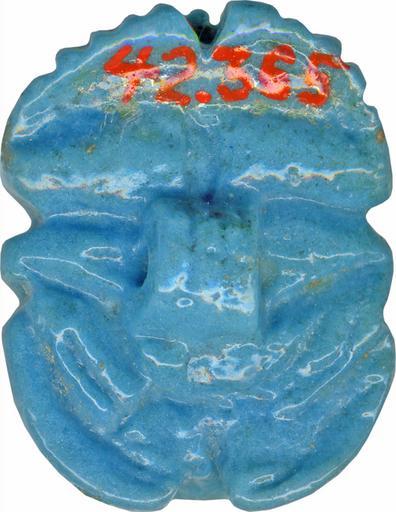MAKE A MEME
View Large Image

| View Original: | Egyptian_-_Naturalistic_Scarab_-_Walters_42365_-_Bottom.jpg (696x900) | |||
| Download: | Original | Medium | Small | Thumb |
| Courtesy of: | commons.wikimedia.org | More Like This | ||
| Keywords: Egyptian - Naturalistic Scarab - Walters 42365 - Bottom.jpg The ancient Egyptians believed that the dung beetle the Scarabaeus sacer was one of the manifestations of the sun god Representations of these beetles were used as amulets and for ritual or administrative purposes Naturalistic scarabs such as this were used as part of the amulet set of the mummy They have a naturalistically formed belly and no additional inscriptions or motifs The back of this example is very high and the highest point is the pronotum dorsal plate of the prothorax Pronotum and elytron wing cases are separated by a curved incised partition line and the wing cases by a vertical hatch line pattern The quarter-spherical head is flanked by quarter-spherical eyes that protrude from the head; the trapezoidal side plates are decorated with hatch lines and clypeus has four frontal serrations The proportions of the top are slightly unbalanced the head is small in comparison to plates and clypeus and the pronotum is large in comparison to the elytron The modeled extremities have natural form and hatch notches on the frontlegs for the tibial teeth Two notches are at both side edges and one at the front and rear edge The bottom is naturally formed and an eye protrudes from the center of the belly The bottom structure is standardized and the extremities visible; the round eye with horizontal drill-hole is big and protrudes completely from the body of the beetle The basic form of the scarab is round-oval The scarab is funerary amulet with regenerative function which was attached to mummy bandages between 664 525 BC Late Period light beige faience with blue glaze cm 1 2 1 7 2 2 accession number 42 365 17658 Henry Walters Baltimore date and mode of acquisition unknown Walters Art Museum Henry Walters Acquired by Henry Walters Faience The Colors of the Heavens The Walters Art Museum Baltimore; The Walters Art Museum Baltimore 2003-2004 place of origin Egypt Walters Art Museum license Ancient Egyptian scarabs in the Walters Art Museum Media contributed by the Walters Art Museum needs category review | ||||